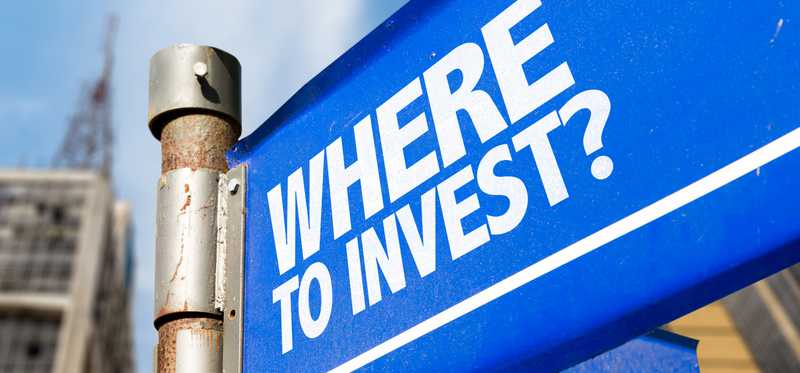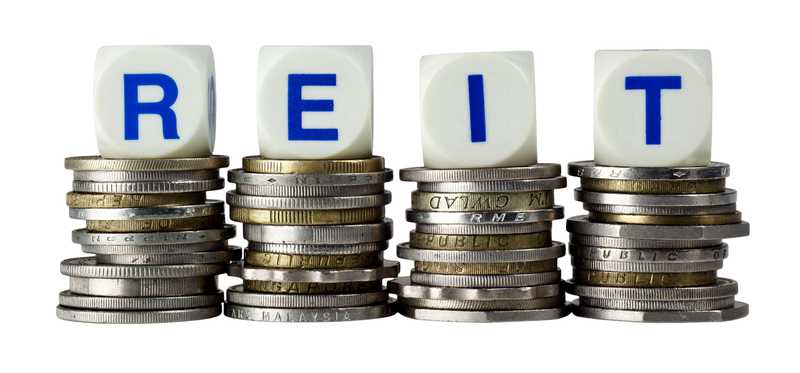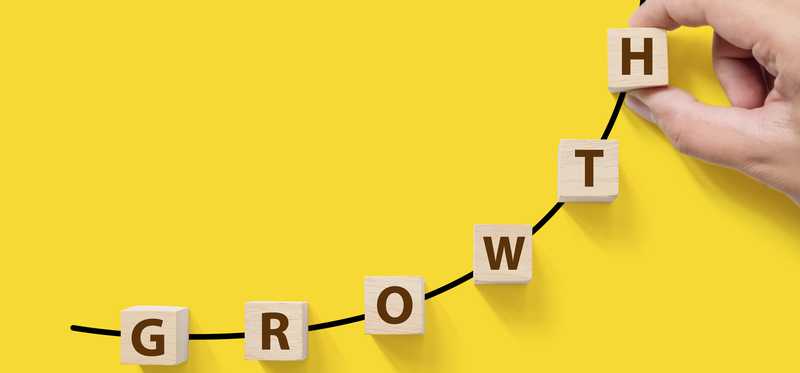10 Stocks to Buy and Hold for the Next Decade

10 Stocks to Buy and Hold for the Next Decade
Stocks to withstand any market environment
Investing can be a complex and emotionally difficult affair... it's not something for the faint of heart. It requires being able to look deeper into an issue, especially when you intend to hold a stock for a decade or more. Astute investors, however, will be able to find great stocks in any market environment because they think outside the box. Here are 10 stocks to buy and hold for the next decade that may not be on your radar today and, importantly, why they should be.
Previous
Next

1. An energy industry survivor
Starting this list off with an energy-related stock might seem like folly, until you note that Enterprise Products Partners (NYSE: EPD) offers investors a 7.7% distribution yield. The long-term annualized return of the broader stock market is around 10%, which means the distribution alone gets you nearly there. All the master limited partnership needs to do is grow earnings in the low single digits and investors should come out with a solid return.
There's no reason to believe that won't happen. First off, Enterprise operates in the midstream space, so commodity prices are not all that important to revenues and earnings. Secondly, its fee-based contracts generally include annual price escalations. And third, it has around $7.7 billion worth of capital projects in the works that should boost results as they come online. Better yet, Enterprise is a financially conservative partnership with ample capacity to support its plans and continue to grow its distribution. Look past the oil connection here and you'll find a real diamond in the rough.
ALSO READ: 4 Energy Stocks Built for a Renewable Energy Future
Previous
Next

2. Shifting to growth
The second name here is another one that may seem like a head scratcher: VEREIT (NYSE: VER). The real estate investment trust (REIT) is probably best known for an accounting error that followed an aggressive acquisition binge. Only that happened in 2014 and VEREIT is a totally different company today with a new and much more conservative leadership team. In fact, the REIT put the last of the accounting issue behind it in 2019 when it settled key legal disputes. As 2020 gets underway management is starting to talk about portfolio growth again.
Investors can finally look at the net lease REIT in a new light and there are a lot of positives. It is still one of the largest players in the sector, it is highly diversified, and it has an investment grade rated balance sheet. The solidly covered dividend provides a roughly 5.7% yield, which gets you about halfway to the market's long-term average return. And as VEREIT starts to grow its portfolio again, after shrinking it for several years, the REIT's financial results should start to improve. But the big story is that its net lease peers are sporting price to funds from operations (FFO) ratios in the 20 times space. VEREIT's valuation sits at around 14 times, meaning there's an opportunity for fundamental improvement and a higher valuation as investors start to recognize the change in direction.
Previous
Next

3. Retail, a different way
Keeping with the outside-the-box thinking, the next name, Simon Property Group (NYSE: SPG), is in the retail space. You could buy a retailer, but owning one of the largest and most diversified retail landlords is a better plan. Consumer buying habits are changing, with online shopping growing while brick-and-mortar shopping is slowing. It's hard to tell which retailers will manage this transition well and which will falter. Simon doesn't care, it will lease its space out to whomever survives the so-called, and likely overhyped, retail apocalypse. In fact, despite the online shopping headwind, its malls were 95% occupied at the end of 2019.
Before you complain that malls are getting hit, too, take a deep breath. Simon owns some of the best enclosed malls and outlet centers in the world. It is weaker malls that are most at risk, and every time one of those closes Simon's malls become more valuable to retailers looking for a place to put a store. Meanwhile, Simon is one of the financially strongest names in the mall REIT sector, even after inking a multi-billion dollar deal to buy a rival. And it has a number of growth projects in the works, including new outlet malls in foreign markets and upgrades of its domestic mall portfolio, that should help keep its business growing for years to come. With a 6.8% yield, meanwhile, Simon doesn't need to do much to get investors to the 10% total return mark. If you have a value bent, out-of-favor Simon is a name you should be looking at today.
Previous
Next

4. In hot water
Water heater maker A. O. Smith (NYSE: AOS) is a change of direction, since it only offers a dividend yield of around 2.4%. This is really a dividend growth story, noting that the average annualized dividend increase over the past decade here was a hefty 21%! And right now is a great time to look at A. O. Smith because the shares are down about 40% from their 2018 highs. So what's going on?
The company makes water heaters. That's a boring slow-growth business in developed markets (about 70% of 2019 revenues), but in emerging markets (around 30%) hot water is an affordable luxury everyone wants as soon as they can get it. The big problem is that China accounts for virtually all of A. O. Smith's emerging market's sales. Growth in that country was slowing even before COVID-19 erupted on the scene. That said, management has been right sizing that business and working to expand its operations into clean air and water filtration. And, perhaps more important to the next decade, A. O. Smith is also looking to build its business in India following the same basic playbook it used in China -- a country where it achieved 19% annualized growth between 2008 and 2018. If it gets even close to that in India, A. O. Smith should have plenty of growth ahead. With that background, the China issues dragging the stock down today start to look more like an opportunity for investors willing to think long term.
Previous
Next

5. A two-for-one sale
Lithium producer Albemarle (NYSE: ALB) covers two big trends in one stock. The first is the increasing importance of electricity in the world and, notably, the need to store it for later use. The second is the push toward electric vehicles. These issues are tied at the hip, of course, but they are different, allowing investors to view Albemarle as an auto play and/or a renewable power play. Either way, the company projects roughly 20% annualized growth for lithium demand between 2018 and 2025, and it is positioning itself to take advantage of that growth. Lithium is a key ingredient in modern batteries.
That said, supply is currently outweighing demand, and lithium prices are weak. This is hampering results and putting downward pressure on Albemarle's shares, noting that it expects 2020 to be a tough year. Which is why it's important to note that this lithium producer also makes bromine and catalysts (together about 60% of 2019 sales). This is not a one-trick pony, Albemarle has a solid foundation to support its growth plans on the lithium side. And as the lithium industry pulls back to resolve the supply/demand imbalance, which is already happening, pricing should solidify (which should happen within the next year or two). Then Albemarle will again see the benefits of the long-term shift toward electrification. With a 1.9% dividend yield, however, this is really a dividend growth story, noting that Albemarle has increased its dividend annually for 25 consecutive years and at a roughly 11% clip over the past decade. The tough times Albemarle is working through today could be a long-term buying opportunity for patient investors.
Previous
Next

6. A utility-like option
Clean energy is a big long-term theme and Albemarle isn't the only way to play it. Another strong choice is Brookfield Renewable Partners (NYSE: BEP). This master limited partnership is backed by Brookfield Asset Management (NYSE: BAM), which has over 100 years of history within the infrastructure sector. The relationship also allows the two entities to team up when making acquisitions and investments, giving Brookfield Renewable Partners the ability to take on bigger transactions. This is a notable benefit, but there's more to like here.
For starters, roughly 75% of Brookfield Renewable's generating capacity is from hydroelectric power plants with long-term contracts attached to them. These are highly reliable and stable assets and provide a strong foundation. From this position of strength it is building out its presence in the solar and wind space, which is where long-term growth will come from. This balanced approach allows the partnership to offer a 4% distribution yield and 5% to 9% annual distribution growth. So far, it has lived up to that distribution growth goal, with a decade of annual hikes under its belt at a compound annual rate that's a touch above 5%. Add in the long-term trends toward electrification and clean energy and this partnership looks like it has years of growth ahead. With such a large yield, meanwhile, it won't take much earnings growth to keep the units marching higher. Indeed, Brookfield Renewable is ready to ride the wave toward clean energy and it should interest more than just those with an ESG bent.
Previous
Next

7. Brand management
The next name is something of an odd duck in the branded food space. Hormel Foods (NYSE: HRL) is best known for making SPAM, an iconic potted meat product. However, it has a collection of over 40 brands that hold the No. 1 or 2 spots in their respective niches. So it's really a brand manager with a heavy focus on protein products. It directly serves both consumers and food service customers, which isn't the norm. But here's where things get really weird: It's unlikely that Hormel will ever be taken over because a charity owns roughly 48% of the company's shares. That charity's mandate includes ensuring Hormel's continued independence. This relationship also creates a more conservative culture at Hormel, since its largest shareholder is reliant on the company's dividend for funding. This is a very defensive, defensive stock.
That said, Hormel has a great history of execution behind it, highlighted by 53 consecutive years of annual dividend increases. The average rate of dividend increase over the last 10 years was an incredible 16% or so. Long-term debt, meanwhile, is virtually non-existent, with a financial debt to equity ratio of just 0.01 times. Top- and bottom-line results have been weak of late, as consumer tastes shift toward fresher foods. But Hormel has been changing along with its customers, notably adding brands like Wholly Guacamole and Columbus Manufacturing, Inc meats. Although the yield is a bit low at roughly 2%, that's actually toward the high end of the company's historical range. Hormel's stock is never cheap, but it looks cheaper than usual today. And if it can successfully adjust with consumer tastes, as it has before, the business will continue to thrive. The stock, meanwhile, is likely to increase along with dividend growth, as it has in the past, to keep the yield at around the 2% mark. Which suggests Hormel could easily best the broader market averages over time.
Previous
Next

8. Finally getting the balance right
When it comes to technology companies, International Business Machines (NYSE: IBM) looks like it has been left way behind the pack. That's not an unfair assessment, but there's more to the story than that. For starters, IBM is an over 100-year old company with a long and successful history of adjusting with the times. Second, it operates in the business-to-business space, meaning its products and services are generally hidden from public view. And third, it's a giant company and sometimes it takes a bit of time for it to find its way in the fast moving tech sector. That's been true lately, as IBM has tried to refocus around things like cloud computing, artificial intelligence, security, and quantum computing.
However, with the recent acquisition of Red Hat, IBM has pretty much completed a big overhaul and new, on trend businesses make up around half of its revenues. Notably, it is focusing on what it calls the hybrid cloud, where customers use both public and private systems. If management's expectation for the next phase of cloud growth is correct, IBM is well positioned to succeed. Early results, meanwhile, suggest that the addition of Red Hat is working out well. Note, too, that the stock has a 4.8% yield. That means that mid-single digit earnings growth would likely be enough to provide solid returns to long-term investors. It's looking increasingly likely that IBM can match or exceed that modest expectation.
Previous
Next

9. Online retail, the pick-and-shovel way
IBM is a contrarian take on the tech sector, which isn't how most people tend to think of this high-growth area. So how about Shopify (NYSE: SHOP)? This is another business-to-business company, only it has been growing like gangbusters since its initial public offering in 2015. If it can keep growing at a pace that's close to the one it has seen lately, Shopify's stock will continue its ascent. But, investors are well aware of the promise here, and have bid the stock up to expensive levels. This is definitely not a value play, you have to believe in the long-term story with all your heart.
What is that story? Well, Shopify helps companies set up online stores. Although you can focus on the bells and whistles of that, the big issue is that it allows its customers to compete with Amazon.com (Nasdaq: AMZN). Increasingly companies are shifting away from that 800 lb gorilla so they can keep more of their profits themselves. Nike (NYSE: NKE) is a recent example, but Shopify's service provides alternatives to even the smallest players. If Shopify can continue to expand its role as the anti-Amazon, at a time when large internet companies like Amazon are facing increasing scrutiny, it could have at least another decade of strong growth ahead of it.
Previous
Next

10. A place to store your cash
The last name on this list, Toronto Dominion (NYSE: TD), is probably the most boring. It's kind of two companies in one. First TD is one of Canada's largest banks. Government regulations in Canada make it difficult for new entrants to get a foothold in the banking market in that country. So Canada is a fairly solid core business accounting for roughly 55% of the company's net income. It is off of this foundation that TD is expanding in the United States (about 35% of net income, with wholesale banking accounting for the rest).
TD is already one of the larger banks in the U.S. market, but it has plenty of room to grow because its footprint is largely concentrated on the East Coast. Moreover, its Canadian roots have left it with something of a conservative business approach (again a result of Canadian banking rules). So slow and steady is the name of the game. However, the shares currently yield 4.6%, so it shouldn't take much earnings growth to provide a market beating total return. Note that the dividend has grown in at a compound annual rate of around 10% over the past two decades. If it can keep that up over the next decade, which isn't an outlandish expectation, TD will likely be a boring bank with a very rewarding stock.
John Mackey, CEO of Whole Foods Market, an Amazon subsidiary, is a member of The Motley Fool’s board of directors. Reuben Gregg Brewer owns shares of Hormel Foods, IBM, Simon Property Group, The Toronto-Dominion Bank, and VEREIT. The Motley Fool owns shares of and recommends Amazon, Brookfield Asset Management, Nike, and Shopify. The Motley Fool recommends Enterprise Products Partners. The Motley Fool has a disclosure policy.
Previous
Next
Invest Smarter with The Motley Fool
Join Over Half a Million Premium Members Receiving…
- New Stock Picks Each Month
- Detailed Analysis of Companies
- Model Portfolios
- Live Streaming During Market Hours
- And Much More
READ MORE
HOW THE MOTLEY FOOL CAN HELP YOU
-
Premium Investing Guidance
Market beating stocks from our award-winning service
-
The Daily Upside Newsletter
Investment news and high-quality insights delivered straight to your inbox
-
Get Started Investing
You can do it. Successful investing in just a few steps
-
Win at Retirement
Secrets and strategies for the post-work life you want.
-
Find a Broker
Find the right brokerage account for you.
-
Listen to our Podcasts
Hear our experts take on stocks, the market, and how to invest.
Premium Investing Services
Invest better with The Motley Fool. Get stock recommendations, portfolio guidance, and more from The Motley Fool's premium services.